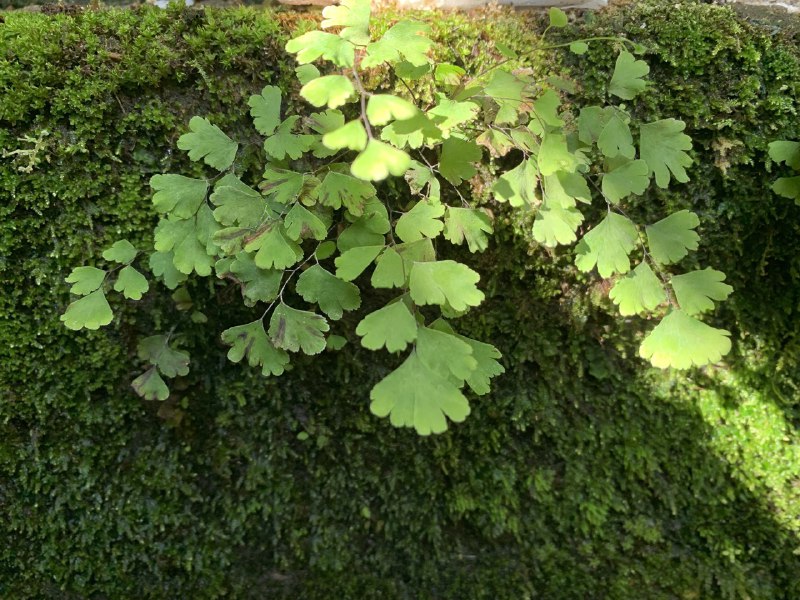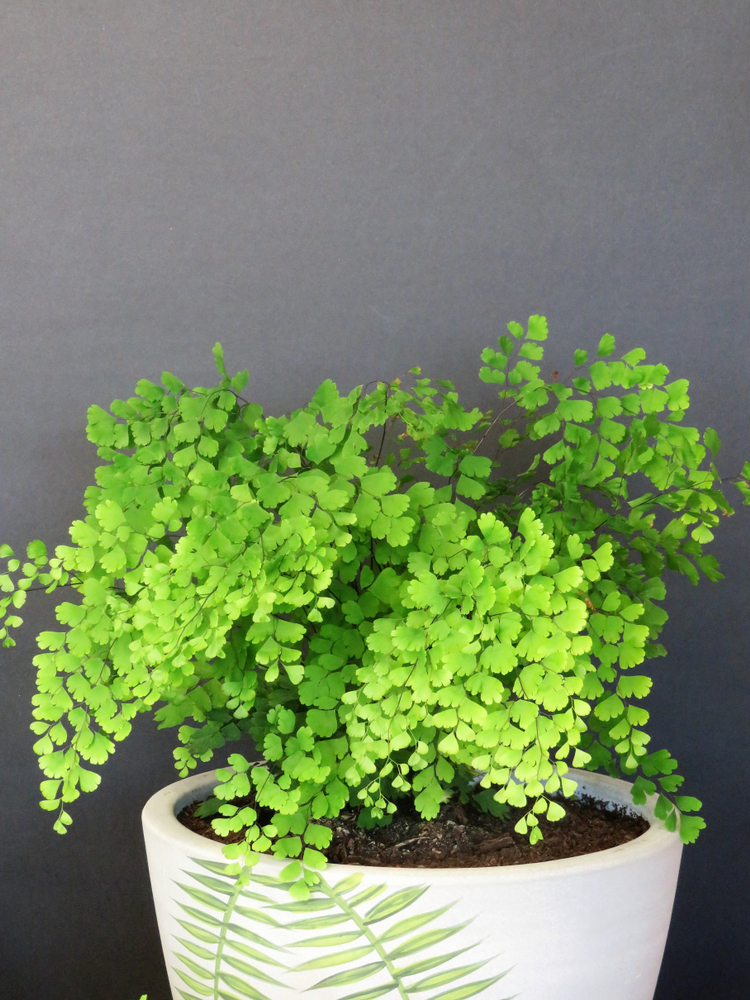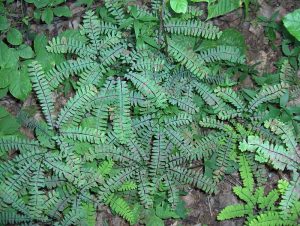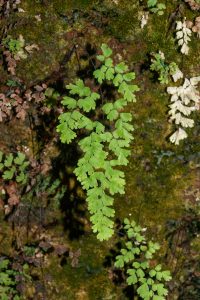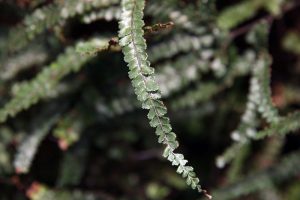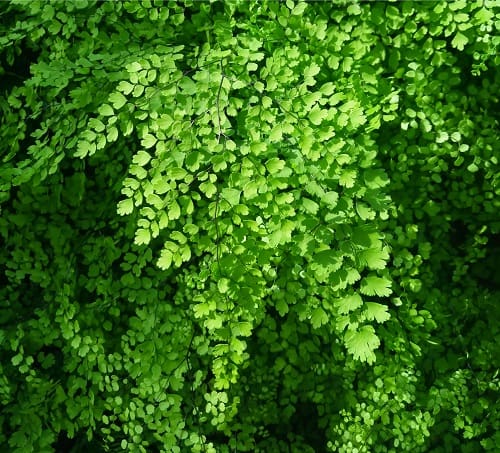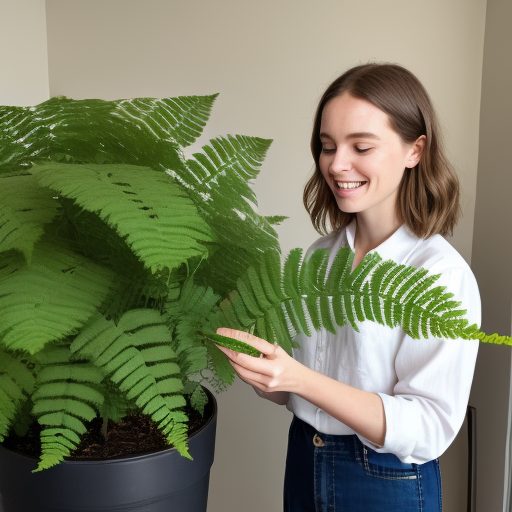HousePlantJoy is supported by our audience. When you purchase through one of our links, we may earn a small affiliate commission. As an Amazon Associate I earn from qualifying purchases. Your cost is not affected.
==================
So, you’re interested in Maidenhair Fern indoor gardening? Fantastic! You’re about to embark on a rewarding journey filled with lush fronds and happy moments. These ferns are the perfect pick for plant enthusiasts who want to add a touch of nature’s charm indoors.
Saniatricahyati, CC BY-SA 4.0 <https://creativecommons.org/licenses/by-sa/4.0>, via Wikimedia Commons
Now, before you rush off to plant Maidenhair Ferns, stick around! I will share tips and tricks to ensure your Maidenhair Fern care is top-notch. We’ll talk about everything from soil moisture to how much light these plants need. So grab your favorite drink, and enjoy reading!
What Is The Maidenhair Fern, Anyway?
Okay, let’s get to know this green beauty a bit more, shall we? The Maidenhair Fern is scientifically known as Adiantum. It belongs to a genus that has quite a few species. There’s a type for everyone from the Northern, Southern, and even the unique Rosy Maidenhair Fern! Isn’t it cool that one fern can have so many siblings?
These ferns are super popular as a houseplant, and it’s easy to see why. They have delicate leaves that dance in the air, almost like they’re saying hello. In their natural habitat, they’re the life of the party. Well, the plant party, at least! This often includes tropical regions and excellent shade gardens.
Fun fact: “Maidenhair” is tied to the fern’s appearance. With their black stems and light, feathery fronds, they’re like the ballerinas of the plant world. These fronds have the unique ability to shed rainwater. This makes sure they always look their best. So, you’re looking for a plant that adds elegance and character to your indoor space? Maidenhair Ferns is the way to go!
The Roots of the Maidenhair Fern
Alright, let’s find out where these fabulous Maidenhair Ferns originally come from. Ready? These ferns are like globetrotters; you can find them in various parts of the world! We have North America’s Northern Maidenhair. Meanwhile, the Southern Maidenhair are native to tropical regions. These plants get around.
If you think about their natural habitat, it makes sense why Maidenhair Ferns love the shade. They often grow under larger plants and trees in the wild, enjoying the indirect light. Yep, no direct sun for these ferns! They also like to hang out where the soil is rich in organic matter, like decomposed leaves. It’s like their version of a comfy, cozy bed!
The genus “Adiantum” comes from a Greek word meaning “unwetted.” This is super fitting. Remember those fronds we talked about? They have this incredible ability to shed rainwater. Imagine having an umbrella built right into you! So, knowing their origin can help you give your Maidenhair Fern the best care possible. Isn’t it cool how understanding a plant’s past can help you in the present?
Why Choose a Maidenhair Fern for Indoors?
So you might be wondering, “Why should I pick a Maidenhair Fern for my indoor garden?” Great question, and I’ve got some fantastic reasons to make you say, “Sign me up!”
Firstly, Maidenhair Ferns are easy to fall in love with because of their graceful appearance. We’re talking about a plant that’s not just green; it’s a conversation starter! With its delicate leaves and airy fronds, it’s like adding art to your home.
Secondly, let’s talk about versatility. Maidenhair Ferns are incredibly adaptable when it comes to light conditions. While they love indirect light, they can also tolerate a bit of morning sun. Just keep them away from too much direct sun, and they’ll be as happy as a plant can be. That makes Maidenhair Fern care a breeze, even if you don’t have the perfect lighting situation.
And remember the health benefits! We all know plants improve air quality, and ferns are no exception. Healthy growth in your Maidenhair Fern means it’s doing its part to make your living space a little fresher.
Types of Maidenhair Ferns
Ready to dive deeper? Great, because it’s time to meet the different members of the Maidenhair Fern family. Knowing the various types can help you pick the perfect one that suits your style. So let’s get acquainted!
Northern Maidenhair
homeredwardprice, CC BY 2.0 <https://creativecommons.org/licenses/by/2.0>, via Wikimedia Commons
First up is the Northern Maidenhair Fern, scientifically known as Adiantum pedatum. It’s native to North America and is known for its fan-shaped fronds. This one loves cool, shaded spots. If you’ve got a room that doesn’t get a lot of direct suns, this fern could be your new best friend!
Southern Maidenhair
H. Zell, CC BY-SA 3.0 <https://creativecommons.org/licenses/by-sa/3.0>, via Wikimedia Commons
Next, we have the Southern Maidenhair Fern. This one hails from the tropical regions and is a natural heat lover. It has a softer look, with curly fronds that say, “Hey, I’m laid back!” So, if you’ve got a warm, humid space, this is the fern for you.
Rosy Maidenhair
Photo by David J.Stang, CC BY-SA 4.0 <https://creativecommons.org/licenses/by-sa/4.0>, via Wikimedia Commons
Have you ever heard of a Rosy Maidenhair Fern? Well, now you have! This one’s a showstopper, with its pinkish fronds that make you go “Wow!” The Rosy Maidenhair is a no-brainer if you’re all about making a statement.
Other Varieties
Of course, there are more types in the Adiantum genus to explore. From Adiantum spp. to other exotic species, each Maidenhair has its unique charm. You’re bound to find one that speaks to you!
Why the Type Matters?
Choosing the correct type of Maidenhair Fern is for more than just show. It’s also about understanding how to give the proper care. Some like it hot; some like it cool. So, knowing what you’re getting into can help you make your Maidenhair Fern happy and healthy.
How to Grow Maidenhair Ferns
You’ve picked your favorite type, and now you’re all set to grow Maidenhair Ferns. Exciting, right? Well, buckle up because we’re diving into the how-tos of Maidenhair Fern care. It’s easier than you think!
The Right Soil
Let’s start with the foundation—soil. Your Maidenhair Fern will love a soil mixture that has good drainage. It should also have plenty of organic matter. Think decomposed leaves or even some leaf mold. Just ensure your pot has drainage holes at the bottom. Nobody likes soggy feet, not even ferns!
Light and Shade
Remember, these ferns are fans of indirect light. Too much sun can make them turn brown, and too little light can lead to poor growth. Find a spot where they can enjoy the morning sun but stay protected from harsh afternoon rays.
Water and Moisture
When it comes to watering, it’s all about keeping that soil moisture just right. Not too wet and not too dry. If the soil dries out too much, you’ll see those fronds go yellow. If the soil’s too wet, you might deal with root rot. Yikes! A good rule of thumb is to water it when the top inch of the soil feels dry.
Propagating Maidenhair Fern
Feeling adventurous? You can propagate Maidenhair Fern by dividing the root ball with a sharp knife during the growing season (usually spring). Make sure each division has some new growth and roots, and then plant them in their own pots filled with fresh soil.
A Tip for Humidity
Maidenhair Ferns love humidity. If the air is too dry, consider misting your fern or placing it near a humidifier. You can also place a glass cloche over the fern for a bit to trap some moisture.
Additional Care
Finally, keep an eye on your fern for any yellowing fronds or black stems. These are signs that your Maidenhair Fern is not entirely happy. Adjust the light, check the soil moisture, and your fern should bounce back in no time.
Caring for the Maidenhair Fern
Great job, you’ve planted your Maidenhair Fern! But your green journey doesn’t stop here. Plants are like pets; they need ongoing love and care. So let’s talk about how to keep that Maidenhair Fern of yours lush and lovely.
Light and Location
We’ve talked about how much light these ferns need, but let’s get specific. An east-facing window that gets some morning sun is a great choice. No east window? Don’t fret. Just avoid placing it in direct sun, which can cause the fronds to turn brown.
Water Woes
Remember, Maidenhair Ferns don’t like their soil to dry out. Keep an eye on soil moisture. Stick your finger into the soil up to an inch. If it feels dry, it’s time to water. But beware of root rot; don’t let the plant sit in water!
The Humidity Factor
Low humidity can make those delicate leaves go dry and crispy. If your home’s air is dry, you can place a humidifier near the fern or put it on a tray filled with water and pebbles. The water evaporates and adds moisture around the plant.
Keeping It Clean
Dead leaves or brown dots? Time for a little grooming. Use a pair of clean scissors to cut away any dead or yellow fronds. This will encourage new growth and keep your Maidenhair Fern looking fresh.
Fertilizing
During the growing season, a diluted, balanced fertilizer can boost your Maidenhair Fern. This is generally during spring and summer. But don’t go overboard; too much can cause the leaves to burn.
Pest and Problems
Look out for common issues like poor growth or yellowing fronds. If you see something off, don’t panic. Adjust the light, check the soil moisture, and maybe move it away from cooling vents that can dry it out.
Common Issues with Maidenhair Ferns
So, you’ve been following all the care tips, but something seems off with your Maidenhair Fern. No worries! Plants sometimes act up, just like pets or even people. Let’s look at some common problems and how to fix them.
Yellowing Fronds
If your Maidenhair Fern has yellowing fronds, it could be a soil moisture issue. Too much or too little water can stress your fern out. Check the soil and adjust your watering routine. Remember, the top inch of soil should be moist, not soggy.
Brown Spots or Edges
Brown spots or edges often mean too much sun or low humidity. Move your fern to a spot with indirect light and try to increase the moisture. Remember, a glass cloche or a room humidifier can help keep that air moist.
Root Rot
Root rot occurs when the soil is overly wet for too long. Check the roots if your fern’s growth seems to stall or if the leaves look unhealthy. If they’re mushy and smell bad, it’s root rot. Remove the damaged roots and replant them in fresh soil with suitable drainage holes.
Shedding Leaves
Maidenhair Ferns shed leaves, especially if they adjust to a new home. But if it continues, it might be due to poor light or low humidity. You can change these factors and keep an eye on your fern.
Black Stems
If you notice black stems, your Maidenhair Fern is depressed. This is often a sign of severe root rot or a fungal issue. You’ll need to remove the damaged parts and may need to replant in fresh soil.
Wrapping It Up
Well, you’ve come a long way in understanding the ins and outs of Maidenhair Fern care. You’re now well-equipped to grow and maintain this delightful indoor plant.
No matter what type you choose, they all appreciate the same loving care. Keep an eye on the soil moisture. Provide the right light, and watch for any signs that your fern needs extra attention.
And let’s not forget, every plant has its personality! Be easy on yourself if things aren’t perfect from the get-go. You’ll get the hang of it, and soon enough, your Maidenhair Fern will be as happy as a plant can be.
So make that little patch of green in your home a sanctuary for yourself and your Maidenhair Fern. You’ve got this, and your fern will thank you for it! Happy planting!
FAQs
How quickly do maidenhair ferns grow?
Maidenhair Ferns grow at a moderate speed. This is especially true during their growing season in spring and summer. With proper care, you’ll notice new fronds and healthy growth within a few weeks. Just be patient and give it time!
Why are my maidenhair fern leaf tips turning brown?
Brown tips usually mean your fern is not happy with its living conditions. It could be low humidity, too much sun, or both! Check the soil moisture and the light conditions. Adjust them, and your fern should perk right up.
Do maidenhair ferns need sunlight?
Well, they do need light, but not direct sun. Remember, too much direct sun can cause brown spots or edges on those delicate leaves. Indirect light or a bit of morning sun will make your Maidenhair Fern happy.
How often should I water my maidenhair fern?
Keep the soil moist but not soggy. A good rule of thumb is to check the soil every few days. Stick your finger in the soil up to an inch deep. If it feels dry, it’s time to water. Easy-peasy!
Are maidenhair ferns easy to care for?
I won’t sugarcoat it. Maidenhair Ferns need a bit more attention compared to some other indoor plants. But don’t let that scare you! Once you understand their needs, taking care of them becomes much easier. You got this!
Learn More About Ferns!
Discover the most fascinating ferns and houseplants, including the Maidenhair fern houseplant! Join us on Facebook, Instagram, and Twitter for beautiful photos, plant care tips, and a community that celebrates the joy of indoor gardening.
Facebook: https://www.facebook.com/houseplantjoyblog
Instagram: http://instagram.com/houseplantjoy20
Twitter: https://twitter.com/HouseplantJoy
Let’s nurture our green spaces together!


